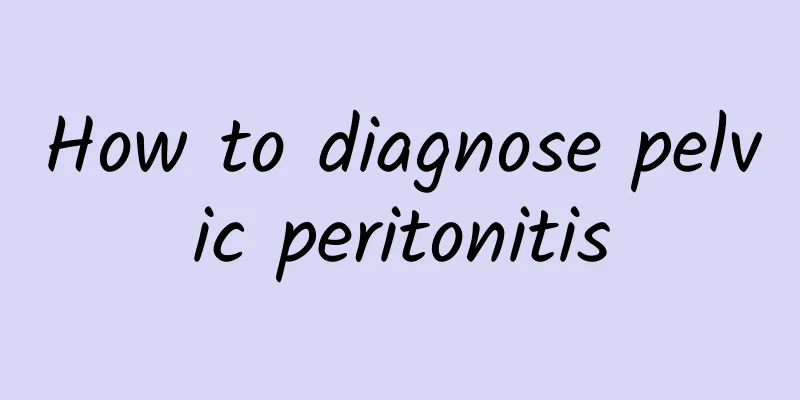Is cervical precancerous lesion serious?

|
Cervical precancerous lesions are a disease that requires high attention. Although they have not developed into cervical cancer, they are potential risks. Timely detection and treatment can effectively prevent the disease from worsening. The severity of cervical precancerous lesions depends on the extent of the lesions. Mild lesions may disappear on their own, while moderate or severe lesions require active intervention. Treatments include medication, surgery, and lifestyle adjustments. 1. Causes of cervical precancerous lesions Cervical precancerous lesions are mainly caused by human papillomavirus (HPV) infection. HPV infection is transmitted through sexual contact, and long-term persistent infection may lead to abnormal proliferation of cervical cells. Genetic factors, low immunity, smoking, etc. may also increase the risk of disease. Environmental factors such as long-term exposure to harmful substances and bad living habits can also affect cervical health. 2. Diagnosis of cervical precancerous lesions Cervical precancerous lesions are usually detected through cervical cytology tests such as TCT and HPV testing. If the test results are abnormal, further colposcopy and cervical biopsy are required to determine the extent of the lesion. Early diagnosis is the key, and regular cervical screening can help detect lesions in a timely manner. 3. Treatment of cervical precancerous lesions Mild lesions may not require special treatment and regular follow-up is sufficient. Moderate or severe lesions require active treatment. Drug treatment: Commonly used drugs include interferon, antiviral drugs, etc., which help enhance immunity and inhibit viral replication. Surgical treatment: including cervical conization, cryotherapy, laser therapy, etc., to remove or destroy diseased tissue and prevent disease progression. Lifestyle adjustments: quitting smoking, eating a balanced diet, exercising moderately, and maintaining good hygiene habits can help improve immunity and reduce the risk of recurrence. 4. Measures to prevent cervical precancerous lesions HPV vaccination is an effective way to prevent cervical precancerous lesions. Regular cervical screening, especially for women over 30 years old, can help detect lesions early. Avoiding multiple sexual partners and using condoms can reduce the risk of HPV infection. Maintaining a healthy lifestyle and enhancing immunity are also important parts of prevention. Although cervical precancerous lesions have not yet reached the cancer stage, they need to be taken seriously. Early detection, active treatment and effective prevention can significantly reduce the risk of cervical cancer. Regular screening, a healthy lifestyle and timely medical treatment are the keys to protecting cervical health. |
<<: What is the cause of functional uterine bleeding at the age of 43?
>>: How to care for cervical hypertrophy
Recommend
Health takes root, millennial love goes out to campus
Fat parents are more likely to raise fat children...
The ban on US beef is lifted conditionally! The Department of Health will study the safe allowable amount
The Executive Yuan issued a press release on the ...
What are the causes of uterine fibroids
Uterine fibroids are a very common disease. When ...
Is Oolong Tea the Best for Fat Removal and Weight Loss? Nutritionist: Do less of these things to avoid affecting your weight loss results
Many people are accustomed to drinking a cup of t...
What are the symptoms of pelvic effusion? Will pelvic effusion cause abdominal pain?
Pelvic effusion is still a little unfamiliar to m...
Does eating too late make you fat? Sugar-restricted diet to lose weight
Q1: I am very busy at work and have to eat dinner...
How to treat candidal vaginitis? Oral antibiotics
Candidal vaginitis is a common type of vaginitis....
What are the specific symptoms of ectopic pregnancy?
Among women's gynecological diseases, ectopic...
How to eat at a convenience store? 10 good things for building muscle and reducing fat revealed
The most frightening thing during the fat loss pe...
Symptoms of vulvar leukoplakia
When it comes to vulvar leukoplakia, many women m...
Precautions before and after physical treatment of cervical erosion
Cervical erosion is not a disease, but a symptom ...
What to eat for dysmenorrhea
The pain of dysmenorrhea can last from one or two...
Are you a "cold-blooded animal"? 4 ways for office workers to save blood circulation
As an office worker, do you often feel cold hands...
Can patients with endometrial polyps prepare for pregnancy?
Can patients with endometrial polyps prepare for ...
What are the main diagnostic methods for dysmenorrhea?
Dysmenorrhea is a common disease in life, and man...









